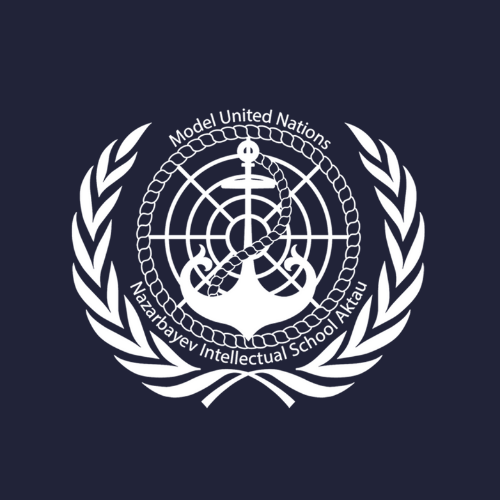The Convention on the Reduction of Statelessness was adopted on 30 August 1961 by the United Nations. The 1961 Statelessness Convention was aimed at ending statelessness by providing prevention measures. A main focus in the Convention was granting nationality to a child born within that State. Moreover, it guaranteed citizenship to every person during a territory transfer. The last context is to avoid statelessness by prohibiting arbitrary deprivation. “By the end of August 2021, 77 States have joined the 1961 Convention”, while since 2010, 44 States have become parties to formalize their commitment to reducing statelessness (UNHCR, 2021). But how was the convention developed?
When a person is born, no matter his skin color, eye shape, or ethnicity, he has the same rights as everyone else, as shown in the “Universal Declaration of Human Rights” established in 1948. This Declaration is a “common standard for all peoples and all nations.” These rights shall grant him safety, freedom of choice, access to education and social security services, prevent barbarous acts, and form a tolerant society where personal development is possible. According to Article 15 of the UDHR, “everyone has the right to a nationality” and “no one shall be arbitrarily deprived of his nationality nor denied the right to change his nationality.” However, how has this right been protected throughout history?
Wars and conflicts between the States often create inconvenient conditions when citizens are most likely to become stateless. The Convention Relating to the Status of Stateless Persons (1964) defined the term “stateless person” as a person who is not considered as a national by any State under the operation of its law. Statelessness is not a problem that was created in a day. It is a result of hundreds of years of violence, ignorance, and cruelty in human history. But the number of people who had no place to call home and no chances to enjoy basic human rights disproportionately increased during the Second World War. There are several causes of it. First of all, discrimination on the basis of gender, race, origin, etc. For example, the 11th Decree of November 24, 1941, “that stripped all German Jews who had left the German Reich of their nationality. As a result, they were no longer considered German citizens under German law.” (David Fraser & Frank Caestecker, 2013). Furthermore, the dissolution of countries or territory transfer causes problems with citizenship and nationality legislation. “Exact figures are not available, but estimates suggest that 10 to 12 million people respectively emigrated to the other side after the partition of Pakistan and India” due to the independence of India and Pakistan in 1947 (Rodion Ebbighausen, 2019).
Filippo Grandi said, “Invisible. It’s the word most commonly used to describe what it is to be without a nationality”. Indeed, being stateless is more than not having a birth certificate. The absence of documentation gives away the chance to get employed, educated, which makes stateless people one of the most vulnerable groups of society. “Statelessness creates a chasm between them (stateless people) and the wider community, threatening the cohesion of our society as a whole” (Aikaterini Kitidi, 2017). To stop this discrimination towards them, the United Nations has adopted the “Convention Relating to the Status of Stateless Persons” that states the rights of stateless peoples to work, to get access to education, public services, and medical care. As a complement to the previously mentioned Convention UN approved “The Convention on the Reduction of Statelessness.” “Together, these two treaties form the foundation of the international legal framework to address statelessness, a phenomenon that continues to adversely affect the lives of millions of people around the world” (The Convention on the Reduction of Statelessness, 1961). How is it helping to improve the plight of stateless people?
In 2014, the UNHCR launched a global campaign “IBelong” to end statelessness by 2024. One of the actions recommended by the UNHCR to reduce the number of stateless people was “to ensure that no child is brought into the world stateless” (Global Action Plan 2014-24). Unfortunately, according to a UN report, “at least 70,000 stateless children are born every year in 20 countries.” These kids have high risks of getting mistreated because of their condition and their children are also likely to inherit their status. Therefore, the 1961 Convention on Statelessness pays a lot of attention to granting a nationality at birth in legal terms. “A State shall grant its nationality to a person born in its territory” (Article 1), “A foundling found in the territory of a State shall be considered to be born within that territory” (Article 2), “A State shall grant a nationality to a person if the nationality of one of its parents was that of that State” (Article 4). Because, by extending access to the birth registration process, people save not only these children from statelessness, but also the next generations from potential statelessness threats. At this rate, statelessness will end in a couple of decades.
For example, the progress in the Republic of Nigeria. “The Government of Nigeria hereby commits to undertake law reforms on registration of children born on Nigerian territory who would otherwise be stateless and children under 10 years of unknown origin” (Results of High-Level Segment on Statelessness, 2019). As a result, “The birth registration drive in Abuja occurred in three IDP (Internally Displaced People) camps over a three-day period, where more than 1,500 children under the age of 17 were registered and issued with birth certificates” (Gabriel Adeyemo, 2021).
To conclude, if statelessness reduction is a long road, the Convention is equal to the map that guides you on that road. The Convention contains a clear plan of action that takes into account the rights of stateless people and the laws of States.
